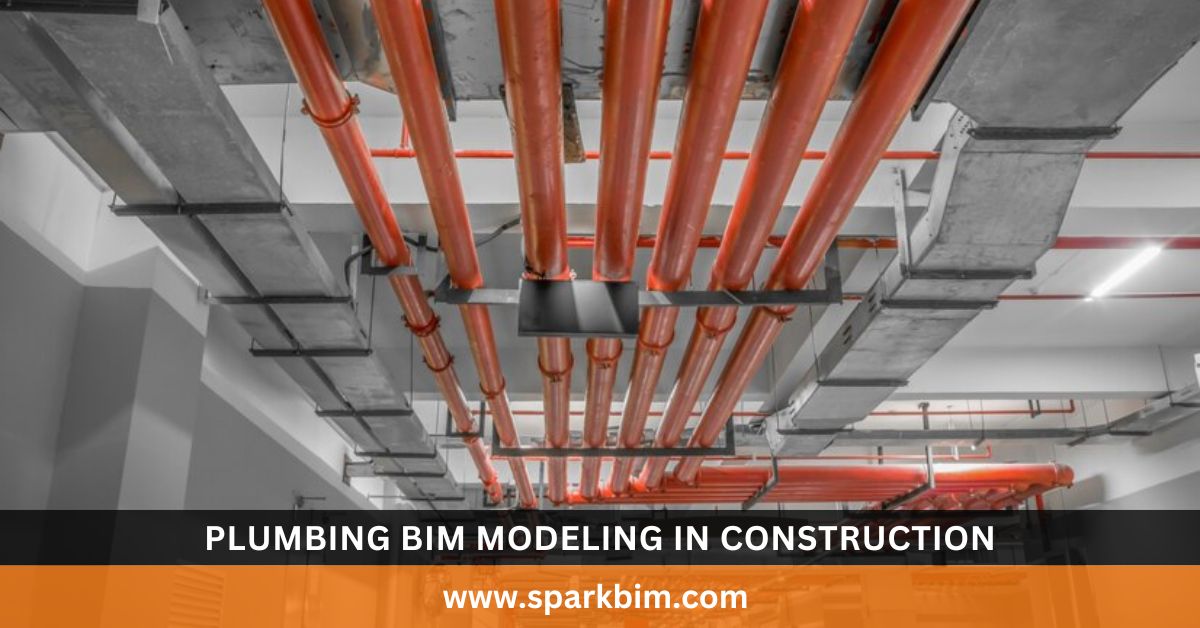Table of Contents
ToggleIn the ever-evolving world of construction, building projects are becoming increasingly complex. This has led to adoption of advanced technologies that help streamline design, reduce costs, and improve efficiency.
One such technology that has revolutionized the construction industry is Building Information Modeling (BIM). While BIM is widely known for its applications in structural design, its role in plumbing systems is equally significant.
Plumbing BIM modeling has become an essential tool in modern construction projects, contributing immensely to the success of both large-scale and small-scale builds.
This blog post will explore the importance of Plumbing BIM Modeling in Construction, its benefits, and how it helps achieve project success.
What is Plumbing BIM Modeling
Plumbing BIM modeling refers to the use of 3D digital models to represent and simulate the plumbing systems of a building.
Plumbing BIM models in Construction include detailed representations of pipes, valves, fixtures, and other plumbing components, allowing engineers, architects, and contractors to visualize the entire plumbing infrastructure before construction begins.
Unlike traditional 2D blueprints, BIM models provide a more accurate, detailed, and comprehensive view of the plumbing design, allowing all parties involved to understand better how the system will function in the finished structure.
Why Plumbing BIM Modeling is Important for Construction Projects
Construction projects involve multiple stakeholders, such as architects, contractors, engineers, and subcontractors. Coordinating all the different aspects of a project is crucial to ensure timely and efficient project completion.
Plumbing systems are integral to the functionality and safety of any building, and plumbing BIM modeling allows for better collaboration and coordination between all stakeholders.
Here are the key reasons why Plumbing BIM Modeling in Construction is crucial for success:
1. Improved Accuracy and Precision
One of the most significant advantages of plumbing BIM modeling is its ability to increase accuracy and precision in the design process.
With traditional 2D drawings, it’s easy for errors to slip through, leading to costly mistakes during construction. Plumbing BIM models are highly detailed, and they provide a 3D visualization of the plumbing system, reducing the chances of errors.
Plumbing systems involve complex networks of pipes, fittings, and fixtures. A small error in measurement or placement can result in delays, increased costs, and rework.
With BIM, plumbing professionals can design and simulate the entire system in a digital environment, minimizing errors before construction even begins.
2. Improved Collaboration and Communication
One of the primary benefits of BIM is the enhanced collaboration it fosters between different teams involved in the project.
Plumbing BIM models allow architects, engineers, contractors, and subcontractors to view and interact with the same digital model, improving communication and coordination.
For plumbing systems, this is especially important. In complex designs, the plumbing system must integrate seamlessly with other building systems, such as electrical and HVAC.
BIM allows for the identification of potential conflicts or clashes between different systems early in the design process, helping to avoid costly changes or delays later on.
3. Clash Detection and Resolution
Clash detection is a significant advantage of plumbing BIM modeling. During the design phase, BIM software automatically detects clashes between plumbing components and other building systems, such as electrical wiring or HVAC ducts.
These clashes are visualized in the 3D model, allowing teams to resolve issues before construction begins.
For Example, if a pipe is designed to run through a wall where an HVAC duct is also planned, the clash detection feature will highlight the conflict. By identifying these issues early, teams can make necessary adjustments to the design, preventing disruptions during construction and reducing costly rework.
4. Cost Savings and Budget Control
Accurate design and early clash detection in plumbing BIM modeling can lead to significant cost savings throughout the project.
By identifying and addressing issues early in the design process, plumbing professionals can avoid costly delays and rework during construction.
Moreover, BIM allows for better cost estimation by providing a detailed list of materials, quantities, and labor requirements. This helps project managers accurately estimate the costs of the plumbing system and ensure the project stays within budget.
With better control over the budget and fewer unforeseen expenses, construction companies can deliver projects on time and within the allocated budget, ensuring client satisfaction.
5. Improved Project Timeline and Efficiency
The use of plumbing BIM modeling in construction significantly reduces the time needed for design, planning, and construction.
With a digital model that contains all the necessary details about the plumbing system, teams can work more efficiently and collaboratively. This reduces the time spent on design revisions, approvals, and coordination, resulting in faster project delivery.
Additionally, the ability to simulate the entire plumbing system before construction allows teams to make informed decisions about the materials, tools, and resources needed for installation.
This leads to fewer delays during the construction phase, as the team is already equipped with the knowledge to install the plumbing system quickly and accurately.
6. Lifecycle Management and Facility Maintenance
BIM is not only valuable during the design and construction phases of a project, but it also plays a vital role in facility management and maintenance.
Once the building is completed, the plumbing BIM model can be used to track and manage the building’s plumbing systems throughout its lifecycle.
Facility managers can refer to the digital model for information about the plumbing system’s components, such as pipe sizes, locations, and maintenance schedules. This helps streamline maintenance and repairs, as technicians can quickly identify the location of plumbing issues and access detailed information about the system.
This level of ongoing support ensures that the building’s plumbing system remains in optimal condition throughout its lifespan, reducing the risk of costly repairs and system failures.
Benefits of Plumbing BIM Modeling in Construction
The advantages of plumbing BIM modeling in construction extend beyond accuracy and efficiency. Here are a few additional benefits that make it an invaluable tool in modern construction projects:
1. Sustainability
Plumbing BIM modeling in construction allows for the incorporation of sustainable design practices. For example, it can help engineers design systems that reduce water consumption and energy usage, contributing to the overall sustainability of the building.
BIM can also simulate how plumbing systems will operate over time, allowing for optimization to reduce environmental impact.
2. Better Visualization for Clients
A 3D plumbing model provides a better visualization for clients, helping them understand how the plumbing system will function within the building. This can be especially helpful for building owners or facility managers who are unfamiliar with technical drawings.
With a clear representation of the plumbing system, clients can make informed decisions about the project’s design and functionality.
3. Streamlined Permitting and Approvals
Using plumbing BIM models can also help streamline the permitting and approval processes.
Since BIM models provide a clear and detailed representation of the plumbing system, they can be quickly submitted to local authorities for approval. This reduces the time spent on back-and-forth revisions and ensures that the project complies with building codes and regulations.
Conclusion
Plumbing BIM modeling is a powerful tool that is transforming the construction industry. Enabling more accurate, efficient, and collaborative design processes ensures the success of plumbing systems in construction projects.
The benefits of plumbing BIM modeling in construction – such as improved accuracy, enhanced collaboration, cost savings, and reduced project timelines—make it an essential component of modern construction practices.
As construction projects continue to grow in complexity, the role of plumbing BIM modeling will become even more critical. With its ability to streamline processes, detect clashes early, and provide long-term management solutions, plumbing BIM modeling is setting the standard for success in the construction industry.
Investing in this technology is no longer just an option; it’s a necessity for ensuring project success and delivering high-quality, functional buildings.


